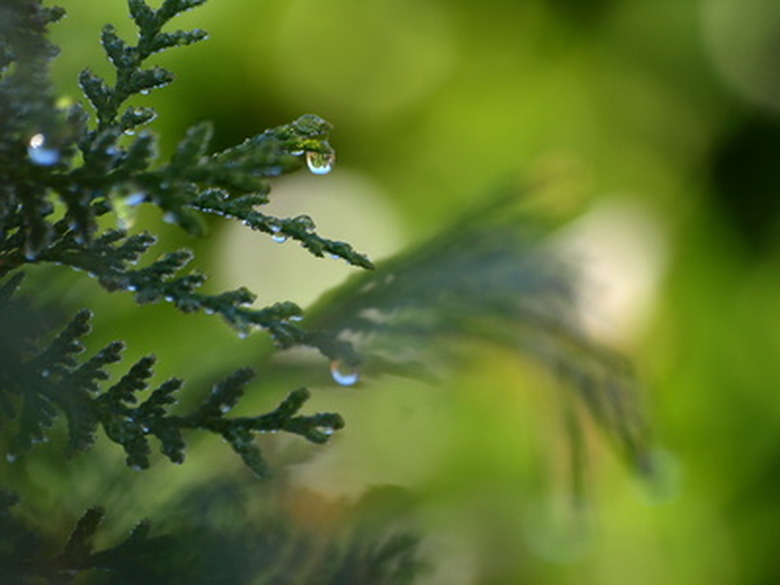Tips On Planting White Cedar
White cedar, known botanically as Thuja occidentalis, is an evergreen tree that has scaly, fine foliage in feathery spreading, but markedly flat, branch tips. White cedar is a versatile, low-maintenance tree and is grown as an ornamental specimen or planted en masse for windbreaks and screen hedging. White cedar, like many evergreens, is slow growing and demands nutrient-rich, moist soil and high-ambient humidity for optimal performance, according to the University of Florida.
Planting Site
Plant your white cedar tree in a location where it will receive full sun or partial shade exposure each day. Afternoon or filtered partial shade in warmer, drier and/or sunnier climates can help prevent dehydration and the attendant browning of foliage.
Soil Qualities
White cedar thrives in a range of nutrient-rich soils that hold a good amount of organic matter. They prefer moist to wet soil provided it is easy draining and the water does not pool or remain trapped around the roots, as can happen with very heavy clay. Cedar will tolerate a range of soil pH from acid to slightly alkaline. Soils with a pH above 8 should be amended to reduce the pH.
- White cedar, known botanically as Thuja occidentalis, is an evergreen tree that has scaly, fine foliage in feathery spreading, but markedly flat, branch tips.
- Afternoon or filtered partial shade in warmer, drier and/or sunnier climates can help prevent dehydration and the attendant browning of foliage.
Placement and Spacing
White cedar trees reach between 25 and 40 feet in height at maturity and should be planted where there is sufficient vertical headroom so transplanting or top pruning will never be necessary. Allow a minimum of 10 to 12 feet between trees when planting as specimens. When planting en masse for thick screening hedging, space the cedars every 8 to 10 feet on center.
White Cedar Care
White cedar trees need full sun to grow thick, robust foliage. Though they can tolerate both alkaline and acidic soil, they prefer loamy soil. Swampy soil is suitable, but they grow more quickly when they're on drier ground and have their water needs met. Keeping the soil wet but not waterlogged is the key to keeping these trees healthy. To make sure the soil doesn't dry out in the sun, you can cover the ground around the base of the tree in mulch. If your soil is poor — or if you just want to make doubly sure your cedars receive all the food they need to thrive — you can feed them liquid fertilizer for conifers at least once a year. White cedar trees tolerate decorative pruning as well as heavy training. The exception to this is if you're growing your white cedars as hedges; cedar hedges can tolerate pruning in spring and late summer.
- White cedar trees reach between 25 and 40 feet in height at maturity and should be planted where there is sufficient vertical headroom so transplanting or top pruning will never be necessary.
